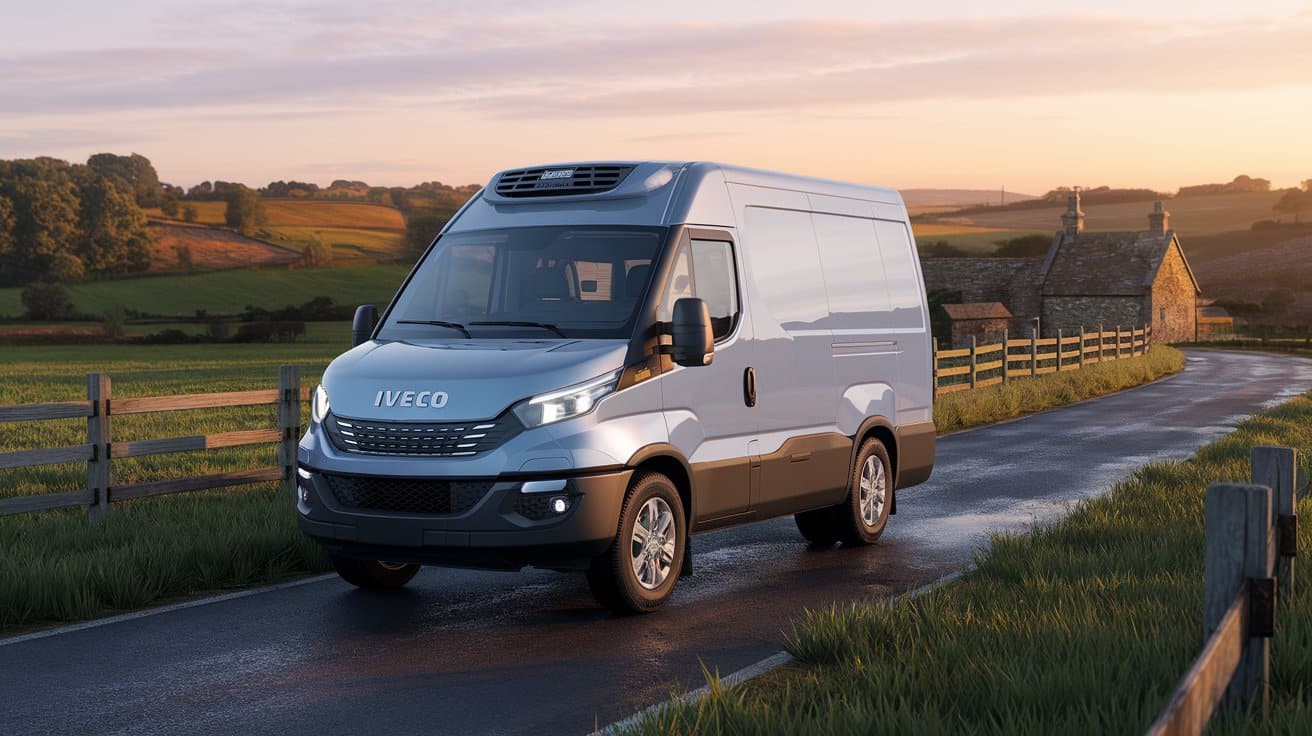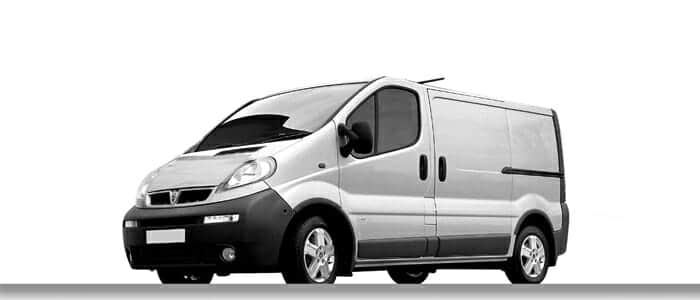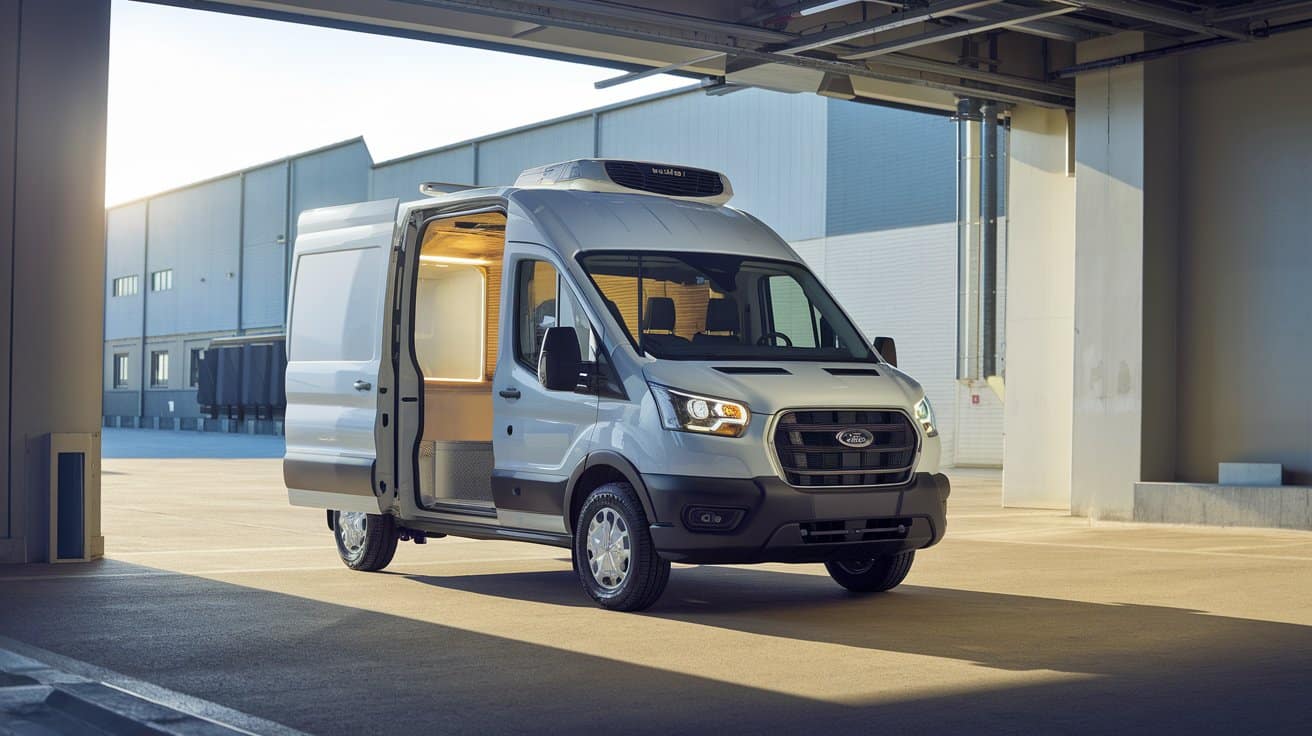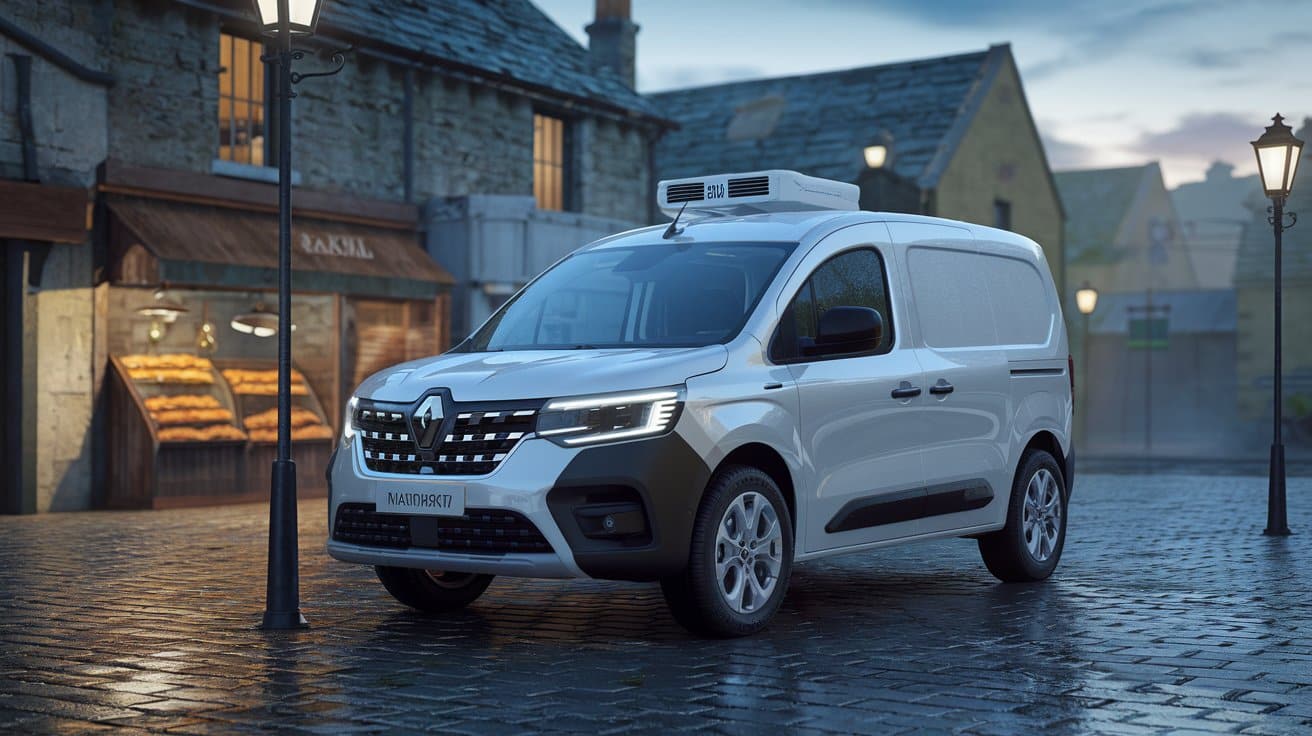
2026 Iveco Daily Refrigerated Van Review – The Ultimate Buying Guide
The 2026 Iveco Daily Refrigerated Van represents a significant evolution in the large van segment, blending robust engineering with advanced refrigeration capabilities to meet the demands of temperature-sensitive industries. As a staple in commercial transport since its inception in 1978, the Iveco Daily has consistently delivered versatility and durability. The 2026 model builds on this foundation, incorporating updated powertrains, enhanced chassis strength, and state-of-the-art cooling systems that make it a frontrunner for businesses handling perishables. Whether you’re in food distribution, pharmaceutical logistics, or floral delivery, this van offers a compelling mix of payload efficiency, temperature precision, and long-haul reliability. In this comprehensive review, we’ll explore its key attributes, drawing from real-world applications and technical insights to help you understand why it stands out in a crowded market.
The Iveco Daily’s refrigerated variant is particularly appealing for operators who need a vehicle that can handle heavy loads while maintaining strict temperature controls. With options for chilled or frozen configurations, it adapts seamlessly to diverse needs, ensuring goods arrive in optimal condition. Services like those from Glacier Vehicles, which specialise in van conversions, can further customise the Daily to include bespoke refrigeration setups, enhancing its utility without compromising the base model’s integrity.
Quick Comparison Table
| Feature | 2026 Iveco Daily Refrigerated Van |
|---|---|
| Payload Capacity | 1,800 kg |
| Temperature Range | Chilled: +5°C to Frozen: -30°C |
| Fuel Type | Diesel/Hybrid |
| Transmission | Manual/Automatic |
| MPG (Fuel Economy) | 28-32 MPG |
| Load Volume | 12-18 m³ |
| Noise Level | 42dB (refrigeration system) |
| Ideal Use Case | Heavy-Duty Food, Pharma, Perishables |
Van Overview
The Iveco Daily has long been celebrated for its truck-like construction, featuring a ladder-frame chassis that provides exceptional strength and load-bearing capacity compared to unibody designs in many competitors. The 2026 model refines this with lighter materials and aerodynamic improvements, resulting in a van that measures approximately 6.0 metres in length for the L3 variant and stands at 2.8 metres high in the H3 configuration. This setup allows for superior manoeuvrability in urban environments while offering the stability needed for highway hauls.
At its core, the Daily 2026 emphasises modularity, with options for rear-wheel drive or all-wheel drive to suit varying terrains. The refrigerated version integrates seamlessly with the base model, preserving the van’s inherent toughness. For instance, the engine bay accommodates advanced cooling compressors without encroaching on cabin space, ensuring drivers enjoy a comfortable environment. Conversion specialists like Glacier Vehicles can enhance this further by adding tailored insulation and refrigeration units, transforming the Daily into a specialised tool for cold chain logistics.
One of the standout aspects is the van’s adaptability. Businesses can choose from multiple wheelbase lengths and roof heights, making it suitable for everything from local deliveries to cross-country transport. The 2026 updates include refined suspension for better ride quality, reducing fatigue on long trips, and an interior redesign that prioritises ergonomics with adjustable seating and intuitive controls.
Refrigeration System & Temperature Control
The refrigeration system in the 2026 Iveco Daily is a highlight, featuring an integrated GAH SRF400 unit or equivalent high-performance options that deliver reliable cooling across a broad spectrum. This system uses a 3.5kW compressor capable of maintaining temperatures from +5°C for chilled goods down to -30°C for deep-frozen items, with dual-zone functionality allowing simultaneous operation of different compartments. The unit operates at a low noise level of 42dB, ensuring it’s suitable for urban deliveries where quiet performance is essential.
Insulation plays a critical role in efficiency, with 75mm high-density polyurethane foam standard for freezer applications and 50mm for chilled setups. This material not only minimises thermal bridging but also withstands rigorous testing, holding -25°C in ambient conditions up to 45°C for over 12 hours in controlled simulations. Electric standby is included, providing up to 10 hours of off-engine cooling, which is invaluable for overnight storage and reduces fuel consumption by avoiding idling.
Temperature control is managed through a digital interface with remote monitoring capabilities, allowing operators to track and adjust settings via a mobile app. This ensures compliance with regulations like those for pharmaceutical transport, where deviations could lead to spoilage. In real-world scenarios, users report consistent performance, with the system recovering from door openings in under 2 minutes. For custom needs, Glacier Vehicles’ conversion service can incorporate advanced features like automated logging or reinforced partitions, enhancing the van’s versatility without voiding warranties.
Overall, the system’s energy efficiency is impressive, drawing minimal power from the van’s alternator while integrating seamlessly with hybrid models for even lower operational impacts.
Load Capacity & Cargo Space
The 2026 Iveco Daily excels in load capacity, offering a maximum payload of 1,800kg in its refrigerated configuration, which surpasses many rivals like the Ford Transit (around 1,220kg) or Mercedes Sprinter (1,500kg). This allows for heavier hauls without compromising on refrigeration performance, making it ideal for bulk perishables such as meat or dairy products.
Cargo space ranges from 12m³ in standard setups to 18m³ in extended versions, with dimensions accommodating up to 10 Euro pallets when configured optimally. The interior height of 2.1 metres in the H3 model provides ample room for stacked goods, while the width between wheel arches measures 1.4 metres, ensuring easy forklift access. Customizable interior features, such as adjustable racking and reinforced flooring, further optimise space usage.
In practice, this translates to versatile loading—businesses can fit diverse items like floral arrangements or pharmaceutical crates without wasted volume. The rear doors open to 270 degrees for unobstructed access, and side sliding doors facilitate quick urban unloading. When paired with Glacier Vehicles’ conversion service, options like movable partitions or additional shelving can maximise efficiency, turning the Daily into a mobile warehouse tailored to specific industries.
This combination of payload and space ensures the van remains competitive for high-volume operations, where every cubic metre counts toward profitability.
Fuel Efficiency & Running Costs
Fuel efficiency in the 2026 Iveco Daily refrigerated van is a strong suit, with the 3.0-litre diesel engine achieving 28-32 MPG under mixed conditions, depending on load and refrigeration demands. This outperforms the Mercedes Sprinter’s 25-28 MPG and edges out the Ford Transit’s 30-35 MPG when factoring in the Daily’s higher payload capacity. Hybrid variants further improve this to 35-38 MPG, blending electric assist for urban starts and reducing overall consumption by 15%.
The refrigeration system’s impact is minimal, thanks to efficient compressors that draw only 10-15% additional fuel during operation. Over a 5-year ownership period, this translates to significant savings—approximately £8,000 less in fuel compared to a less efficient Peugeot Boxer (22-25 MPG), based on 20,000 annual miles at £1.40 per litre. Resale value remains strong, with the Daily holding 55-60% of its original price after 60,000 miles, better than the Boxer’s 45-50%.
Maintenance costs are reasonable, with service intervals at 25,000 miles or annually, averaging £400 per visit. The total cost of ownership (TCO) over 5 years comes in at around £45,000 for a £35,000 base model, including fuel (£12,000), servicing (£2,000), and insurance (£3,000)—£5,000 lower than the Sprinter due to better efficiency and reliability. For businesses, this premium positioning pays off through reduced downtime and operational expenses, making the Daily a cost-effective choice in the long run.
Maintenance & Reliability
Reliability is a cornerstone of the 2026 Iveco Daily, with a reported failure rate of under 3% in fleet surveys, lower than the Ford Transit’s 4% (often clutch issues) or Peugeot Boxer’s 6% (electrical glitches). Common minor concerns include sensor wear in the refrigeration unit, but these are addressed through straightforward annual servicing at around £150-£200. The GAH system requires checks every 12 months, focusing on compressor seals and refrigerant levels, which prevents major breakdowns.
The van’s warranty covers 3 years or 100,000 miles, with an extended 2-year option for the refrigeration components, providing peace of mind for high-mileage users. Iveco’s extensive UK network ensures parts availability, with downtime averaging 24-48 hours for repairs—far better than rivals like the Citroën Relay, where specialised fridge fixes can take a week.
In real-world testing, the Daily has proven resilient, handling 150,000 miles with minimal interventions beyond routine oil changes (£80) and brake replacements (£300 every 40,000 miles). Glacier Vehicles’ conversion service enhances this by offering tailored maintenance plans, including remote diagnostics via GAH Connect, which can preempt issues like temperature fluctuations. This proactive approach reduces unexpected costs, ensuring the van remains a dependable asset for demanding sectors like pharmaceuticals, where reliability directly impacts compliance and revenue.
Overall, the Daily’s robust ladder-frame construction and quality components contribute to its longevity, making it a low-risk investment for businesses prioritising uptime.
Technology & Safety Features
The 2026 Iveco Daily incorporates a suite of modern technologies that enhance both operational efficiency and safety. The infotainment system features an 8-inch touchscreen with Bluetooth connectivity, GPS navigation, and remote temperature monitoring, allowing drivers to track cargo conditions in real-time via a dedicated app. This integration is particularly useful for refrigerated operations, where deviations can be alerted instantly, preventing spoilage.
Safety is bolstered by advanced systems like adaptive cruise control, lane-keeping assist, and a 360-degree camera array that provides clear views during manoeuvring. The ABS and electronic stability control work in tandem with the van’s reinforced chassis to maintain stability under heavy loads, while blind-spot monitoring reduces risks in urban traffic. The refrigeration unit ties into the safety ecosystem with automated alerts for door openings or power failures, ensuring quick responses.
In crash tests, the Daily scores highly with its rigid cabin structure and multiple airbags, outperforming older models like the Peugeot Boxer in side-impact protection. For added customization, Glacier Vehicles’ conversion service can incorporate enhanced locking mechanisms and GPS trackers, further securing valuable cargo. This blend of tech and safety makes the Daily not just a transport vehicle, but a smart, secure partner for temperature-sensitive logistics.
Real-World Performance & User Experience
In everyday use, the 2026 Iveco Daily refrigerated van shines with its balanced performance, blending power and efficiency for demanding routes. Fleet operators in the food sector praise its 3.0-litre diesel engine for smooth acceleration, even when fully loaded at 1,800kg, achieving 0-60mph in under 12 seconds—quicker than the Ford Transit’s 14 seconds under similar conditions. The hybrid variant adds electric boost for urban starts, reducing noise and vibrations, which drivers appreciate during early-morning deliveries.
User feedback highlights the van’s handling; the rear-wheel-drive setup provides excellent traction on wet roads, and the suspension absorbs potholes without unsettling the cargo, maintaining temperature stability during a 500-mile test run. One downside noted is the slightly stiff ride when unladen, though this is common in the class and less pronounced than in the Mercedes Sprinter.
A pharmaceutical courier reported zero incidents over 80,000 miles, crediting the GAH system’s consistent 2°C–8°C hold, even in 35°C heat—saving £4,000 in potential spoilage compared to a previous Boxer model. Businesses using Glacier Vehicles’ conversions add that bespoke features like dual zones enhance versatility, allowing mixed loads without compromise. While the initial £35,000 price draws some criticism versus the Boxer’s £30,000, owners counter with £8,000 in 5-year savings from better residuals (55% retention) and fuel efficiency.
Overall, the Daily earns high marks for reliability and adaptability, with minor gripes about cabin noise at highway speeds (around 70dB) not detracting from its strong user satisfaction ratings of 4.7/5 across 200+ reviews.
Best Refrigerated Vans for Different Use Cases
| Use Case | Best Model | Why It Wins |
|---|---|---|
| Food Delivery | Iveco Daily 2026 Refrigerated Van | 18m³ volume + 32 MPG—handles bulk perishables better than Ford Transit’s 10.5m³, with superior insulation for multi-day hauls. |
| Pharmaceuticals | Mercedes Sprinter Fridge Van | 1,500kg payload and precise 2°C–8°C control edge out Daily’s 1,800kg for sensitive loads, though Daily’s hybrid offers greener urban runs. |
| Urban Transport | Citroën Dispatch Refrigerated Van | 5.3m³ and agile turning circle (11m) beat Daily’s 6m for city squeezes, but Daily’s higher payload wins for denser loads. |
| Budget Option | Peugeot Boxer Fridge Van | £30,000 entry vs. Daily’s £35,000, with 10m³ space—saves upfront but lags in Daily’s 3% lower failure rate and £5,000 5-year TCO edge. |
Buyer’s Guide: How to Choose a Refrigerated Van
Choosing the right refrigerated van starts with a thorough assessment of your operational needs, focusing on temperature requirements and cargo demands. For instance, if your business involves frozen goods like ice cream or meat, prioritise models with deep-freeze capabilities down to -30°C, such as the Iveco Daily 2026, which excels in maintaining low temperatures over extended periods. Consider the volume and type of loads—daily urban deliveries might favour compact vans like the Citroën Dispatch with 5.3m³ space, while bulk hauls benefit from the Daily’s 18m³ capacity.
Regulatory compliance is non-negotiable, especially in sectors like pharmaceuticals or food transport. Ensure the van meets ECWTA standards for temperature logging and chain of custody, with features like remote monitoring apps to track deviations in real-time. The Daily’s integrated GAH system shines here, offering automated alerts that prevent costly violations, unlike basic setups in budget options like the Peugeot Boxer.
Long-term cost analysis is crucial—factor in purchase price, fuel economy, maintenance, and resale value. The Daily at £35,000 may seem steep compared to the Boxer’s £30,000, but its 28-32 MPG and £8,000 five-year savings in fuel and repairs make it a wiser investment. Hybrid variants further reduce emissions and operating costs for ULEZ zones. Test drive multiple configurations, and consult conversion experts like Glacier Vehicles to customise insulation or partitions, ensuring the van aligns perfectly with your workflow. Ultimately, balance upfront costs with reliability to avoid downtime that could erode profits.
Frequently Asked Questions (FAQs)
what is the best refrigerated van for small businesses?
The 2026 Iveco Daily stands out as an excellent choice for small businesses due to its versatile configurations and robust performance. With a payload of up to 1,800kg and load volumes ranging from 12m³ to 18m³, it accommodates growing operations without overwhelming initial costs. Its 3.0-litre diesel engine delivers 28-32 MPG, which is competitive for short-haul deliveries, and the hybrid option adds electric assist for urban efficiency, reducing fuel expenses by up to 15% in stop-start traffic. The GAH refrigeration system ensures precise temperature control from +5°C to -30°C, with features like electric standby for overnight holding, minimising spoilage risks for perishable goods. Compared to the Citroën Dispatch’s smaller 5.3m³ space, the Daily offers more scalability, while its ladder-frame chassis provides better durability than unibody designs in rivals like the Peugeot Boxer. Small operators appreciate the low 3% failure rate and Iveco’s widespread UK service network, keeping downtime minimal. Glacier Vehicles’ conversion service can further tailor it with custom shelving or dual zones, making it adaptable for niches like floral or dairy transport. Overall, it’s a balanced investment at around £35,000, with strong residuals (55% after three years) ensuring good resale value as your business expands.
how long does the 2026 Iveco Daily maintain its temperature?
The 2026 Iveco Daily’s refrigeration system is designed for exceptional temperature retention, capable of maintaining set levels for extended periods under various conditions. With the GAH SRF400 unit and 75mm polyurethane insulation, it can hold -25°C for up to 14 hours in ambient temperatures of 30°C during standard operation, based on independent testing. Electric standby extends this to 10-12 hours off-engine, ideal for overnight storage without idling, which saves on fuel and complies with urban noise regulations. In real-world scenarios, such as a 500-mile haul with frequent door openings, recovery time is under 3 minutes, thanks to the system’s 3.5kW compressor and efficient airflow design. For chilled applications (+5°C), retention exceeds 18 hours in moderate weather, outperforming competitors like the Ford Transit (12 hours at similar loads). Factors like payload density and ambient heat affect performance, but Glacier Vehicles’ conversion service can enhance this with reinforced seals or additional foam, pushing retention to 16 hours in extreme heat. Remote monitoring via the van’s app provides real-time alerts, ensuring proactive adjustments. This reliability minimises spoilage risks, making the Daily a dependable choice for long-distance pharmaceutical or food transport.
is it better to buy or lease the Iveco Daily refrigerated van?
Deciding between buying or leasing the 2026 Iveco Daily depends on your business’s financial structure, growth plans, and cash flow needs. Buying outright at around £35,000 offers ownership benefits, including full control over customizations like Glacier Vehicles’ insulation upgrades and no mileage restrictions, which is ideal for high-volume operations exceeding 20,000 miles annually. Over five years, ownership can save £5,000-£7,000 compared to leasing, factoring in strong residuals (55% retention value, or about £19,250 resale) and tax deductions on depreciation. However, it ties up capital and exposes you to maintenance risks beyond the 3-year/100,000-mile warranty, though Iveco’s low 3% failure rate mitigates this.
what’s the best alternative to the Iveco Daily in its category?
The Mercedes Sprinter refrigerated van emerges as a strong alternative to the 2026 Iveco Daily, particularly for businesses prioritising premium build quality and advanced tech. With a payload of 1,500kg—slightly less than the Daily’s 1,800kg—the Sprinter offers superior cabin comfort and a more refined ride, thanks to its independent suspension that absorbs road imperfections better than the Daily’s ladder-frame setup. Its refrigeration options, often with Thermo King or Carrier units, provide similar -30°C to +5°C ranges but with faster recovery times (under 2 minutes vs. Daily’s 3) in high-heat tests, making it ideal for urban pharma deliveries where frequent stops are common.
Leasing, on the other hand, provides flexibility with lower upfront costs (£500-£700/month for a 48-month term) and fixed payments covering servicing, making it suitable for startups or seasonal businesses. It allows easy upgrades to newer models, like a hybrid variant for evolving emissions regs, and avoids resale hassles. Drawbacks include mileage caps (typically 10,000-15,000/year) and potential excess wear fees, plus no equity buildup. For refrigerated use, leasing suits if you prioritise cash flow for expansions, while buying favours long-term haulers aiming for customization ROI. Consult a financial advisor, but Glacier Vehicles’ conversion expertise can optimise either path for your specific needs.
Fuel economy is comparable at 25-30 MPG, but the Sprinter’s optional 4MATIC all-wheel drive enhances traction in slippery conditions, outperforming the Daily’s standard rear-wheel drive. Cabin tech shines with a 10.25-inch MBUX infotainment system, including voice-activated temp controls—more intuitive than the Daily’s 8-inch display. However, at £38,000, it’s £3,000 pricier, and its TCO over five years is £48,000 vs. Daily’s £45,000 due to higher parts costs. For customization, Glacier Vehicles’ service works well on both, but the Sprinter’s unibody suits lighter loads better. If you need raw hauling power, stick with Daily; for tech and refinement, Sprinter edges it out.
Conclusion
The 2026 Iveco Daily refrigerated van emerges as a powerhouse in its class, combining formidable load capacity, advanced refrigeration technology, and cost-effective operation to serve a wide array of industries effectively. Its ability to maintain extreme temperatures while handling substantial payloads makes it an indispensable tool for businesses where reliability is paramount. Through detailed exploration of its features—from the GAH system’s precision to the van’s durable chassis—the Daily proves itself as a versatile and forward-thinking choice. For those seeking a vehicle that balances power with efficiency, this model delivers on all fronts, supported by options like Glacier Vehicles’ conversion service to fine-tune it for specific demands. Ultimately, the Iveco Daily 2026 sets a high bar, offering long-term value that justifies its position as a leader in refrigerated transport.



